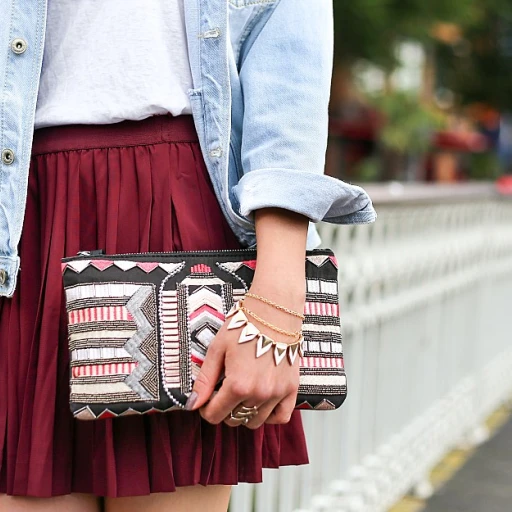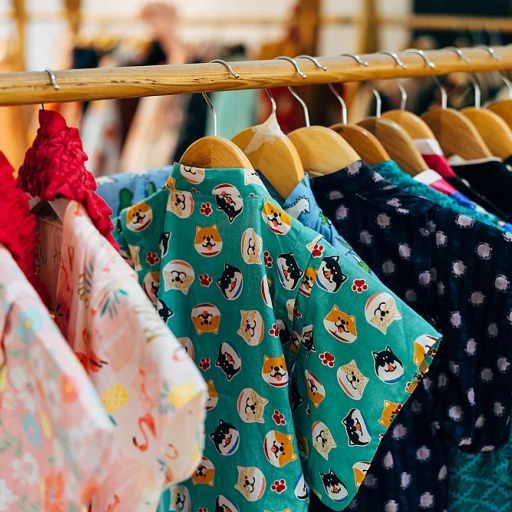
Understanding the unique needs of baby clothes storage
Why Baby Clothes Need Special Storage
Storing baby clothes is not as simple as folding and stacking. Babies grow fast, and their clothing needs change almost every week, especially in the first year. From newborn onesies to bigger outfits for the next size up, parents often find themselves with a mix of sizes, styles, and seasonal items. This makes organizing baby clothes a real challenge in any nursery or closet.
Common Challenges Parents Face
- Rapid growth: Babies outgrow clothes quickly, so you need a system to rotate items in and out of storage bins or drawers.
- Limited space: Most nurseries and baby closets are small, so maximizing every inch is key.
- Frequent changes: With diaper changes and outfit swaps happening several times a day, easy access is a must.
- Keeping track of sizes: It’s easy to lose track of which clothes fit now and which are for later weeks of pregnancy or baby’s growth.
What Makes Baby Clothing Different?
Baby clothes are often tiny, delicate, and come in a variety of fabrics. Many items, like rompers, bodysuits, and knitwear, need gentle handling and proper storage to stay in good condition. Some parents also like to keep special pieces, such as a baby girl’s first dress or a unique romper, as keepsakes. This adds another layer to organizing and storing baby clothes.
Additionally, safety is a top concern. Storage bins, dresser drawers, and closet organizers should be free from sharp edges and made from safe materials. The right clothes organizer can help keep everything in its place, making it easier to find what you need during a busy week.
For more inspiration on storing delicate newborn outfits, check out this article on the charm of long sleeve rompers for newborns.
Choosing the right storage solutions for small spaces
Maximizing Every Inch of Your Nursery
When it comes to baby clothes storage, small spaces can be a real challenge. But with a few clever strategies, you can keep your nursery organized and stylish, even if you don’t have a big closet or dresser. The key is to use every bit of space efficiently and choose storage solutions that fit your needs.- Drawer dividers: These are perfect for separating baby clothes by size, type, or even week of pregnancy. Drawer dividers help you see everything at a glance, making it easier to grab what you need during a busy week.
- Storage bins and baskets: Stackable storage bins are ideal for storing baby items under the crib or on closet shelves. Label each bin by clothing size or season to keep things simple and accessible.
- Over-the-door organizers: Don’t forget the back of the nursery door! Hanging organizers can store baby shoes, hats, or even small clothing items, freeing up drawer and closet space.
- Multi-purpose furniture: A changing table with built-in drawers or a dresser that doubles as a changing station can save space and keep essentials close at hand.
Sorting by size, season, and style
How to Sort Baby Clothes for Maximum Efficiency
Sorting baby clothes is a game-changer for keeping your nursery, dresser, or closet organized. Babies outgrow items quickly, so a smart system saves time and reduces stress. Here’s how to make the most of your storage space and keep everything easy to find.- By Size: Babies grow fast, so group clothing by size (newborn, 0-3 months, 3-6 months, etc.). Use labeled storage bins or drawer dividers for each size. This way, you always know where to find the right fit and can easily store baby clothes that are too big or too small.
- By Season: Separate items by season—think lightweight onesies for summer and cozy sleepers for winter. Store off-season clothes in bins on a high shelf or under the crib to free up space in your main dresser or closet.
- By Style and Use: Everyday essentials like bodysuits and pajamas should be easy to grab. Special occasion outfits or accessories can go in a dedicated drawer or organizer. For inspiration on adorable and practical outfit ideas, check out this guide on organizing baby rompers.
Practical Tips for Staying Organized
- Label everything—bins, drawers, and closet sections. This helps anyone caring for your baby find what they need quickly.
- Rotate clothes weekly. When your baby outgrows a size, move those items to a storage bin and bring out the next size up.
- Keep a small basket or bin for clothes that no longer fit. At the end of each week, transfer these to long-term storage or donate them.
- Use clear storage bins so you can see what’s inside without opening each one.
Incorporating fashion into storage
Making Storage Stylish and Functional
When it comes to organizing baby clothes, storage isn’t just about keeping things tidy. It’s also a chance to add a touch of style to your nursery or baby closet. The right storage solutions can make your space feel both organized and beautiful, even if you’re working with a small area or a big dresser.
- Choose Coordinated Storage Bins: Select storage bins or baskets that match your nursery’s color palette. Soft pastels, neutral tones, or playful patterns can make even the most practical items feel special. Clear bins are also great for quickly spotting clothes by size or season.
- Use Drawer Dividers: Drawer dividers help separate clothing by type or size, making it easy to find what you need during a busy week. They also keep tiny items like socks and hats from getting lost in the shuffle.
- Label Everything: Labels are a simple way to keep your baby clothes storage system organized. Use tags or stickers to mark bins and drawers by clothing size, season, or even by style. This makes it easier to store baby clothes as your child grows, and helps everyone in the family stay on track.
- Display Favorite Pieces: Hang a few standout outfits or accessories on hooks or a mini clothes organizer. This not only adds a decorative touch but also keeps your favorite items within easy reach for those special occasions.
- Rotate Seasonally: As the weeks of pregnancy turn into months with your baby, swap out clothing in your closet or dresser to reflect the current season. Store out-of-season clothes in labeled storage bins to free up space for items your baby wears now.
Don’t forget, keeping your baby’s clothes storage both stylish and practical can make daily routines smoother and more enjoyable. Whether you’re organizing a big nursery or a small changing table, a little creativity goes a long way in making your space feel unique and functional.
Maintaining order as your child grows
Keeping Up with Growth Spurts
Babies grow fast, and their clothing needs change almost every week. To keep your nursery or closet organized, it’s important to regularly review what’s in your baby’s dresser, storage bins, and closet. Set a reminder every month or after each pregnancy week milestone to check which clothes still fit and which ones are ready to be stored away or donated.- Use labeled storage bins for different clothes sizes. This makes it easy to rotate items in and out as your baby grows.
- Drawer dividers are great for separating clothing by size or season, so you can quickly find what you need, even during a busy week.
- Keep a small basket or bin in the nursery for clothes your baby has outgrown. Once it’s full, store baby clothes in a bigger bin or pass them on to someone else.
- Consider a clothes organizer that hangs in the closet or on the back of a door for free space-saving storage.
Adapting Your Storage System
As your child grows, your storage needs will change too. The bins and organizers that worked for newborn clothes may not be big enough for toddler outfits. Review your storage solutions every few months to make sure they still fit your child’s wardrobe and the available space.- Switch out small bins for larger ones as clothing gets bigger.
- Reorganize the dresser and closet to make room for new items and remove anything that’s no longer needed.
- If you’re short on space, try under-crib storage or multi-purpose furniture like a changing table with built-in drawers.
Sustainable and safe storage options
Eco-Friendly Materials and Safe Storage Practices
When it comes to storing baby clothes, choosing sustainable and safe options is essential for both your child and the environment. Babies have delicate skin, so it’s important to avoid storage solutions that may contain harsh chemicals or materials. Look for storage bins and organizers made from natural fibers or BPA-free plastics. Wooden closet organizers and drawer dividers are also a great choice, as they are durable and free from harmful substances.
Smart Storage for Growing Needs
As your baby grows, their clothing size and storage needs will change. Opt for adjustable storage solutions like modular closet systems or stackable bins. These allow you to easily adapt your nursery or dresser setup as you transition from newborn to toddler clothes. Using clear bins or labeling each drawer by clothing size or season makes it simple to find what you need, especially during busy weeks or late-night changes.
- Choose breathable storage bins to prevent moisture buildup and keep clothes fresh.
- Wash and thoroughly dry all items before storing to avoid mold or mildew.
- Store baby clothes in a cool, dry space away from direct sunlight.
- Rotate clothing regularly to ensure nothing is forgotten or outgrown.
Reduce, Reuse, and Organize
Consider donating or passing on gently used baby clothes to free up space and support sustainability. Using a clothes organizer or drawer dividers helps keep small items like socks and hats sorted, making it easier to maintain order. If you’re storing baby clothes for future use, opt for acid-free boxes or cotton bags to protect delicate fabrics over time.
By making thoughtful choices about storage materials and organization, you can create a safe, efficient, and eco-friendly space for your baby’s wardrobe—one that grows with them and keeps their clothes in top condition.













